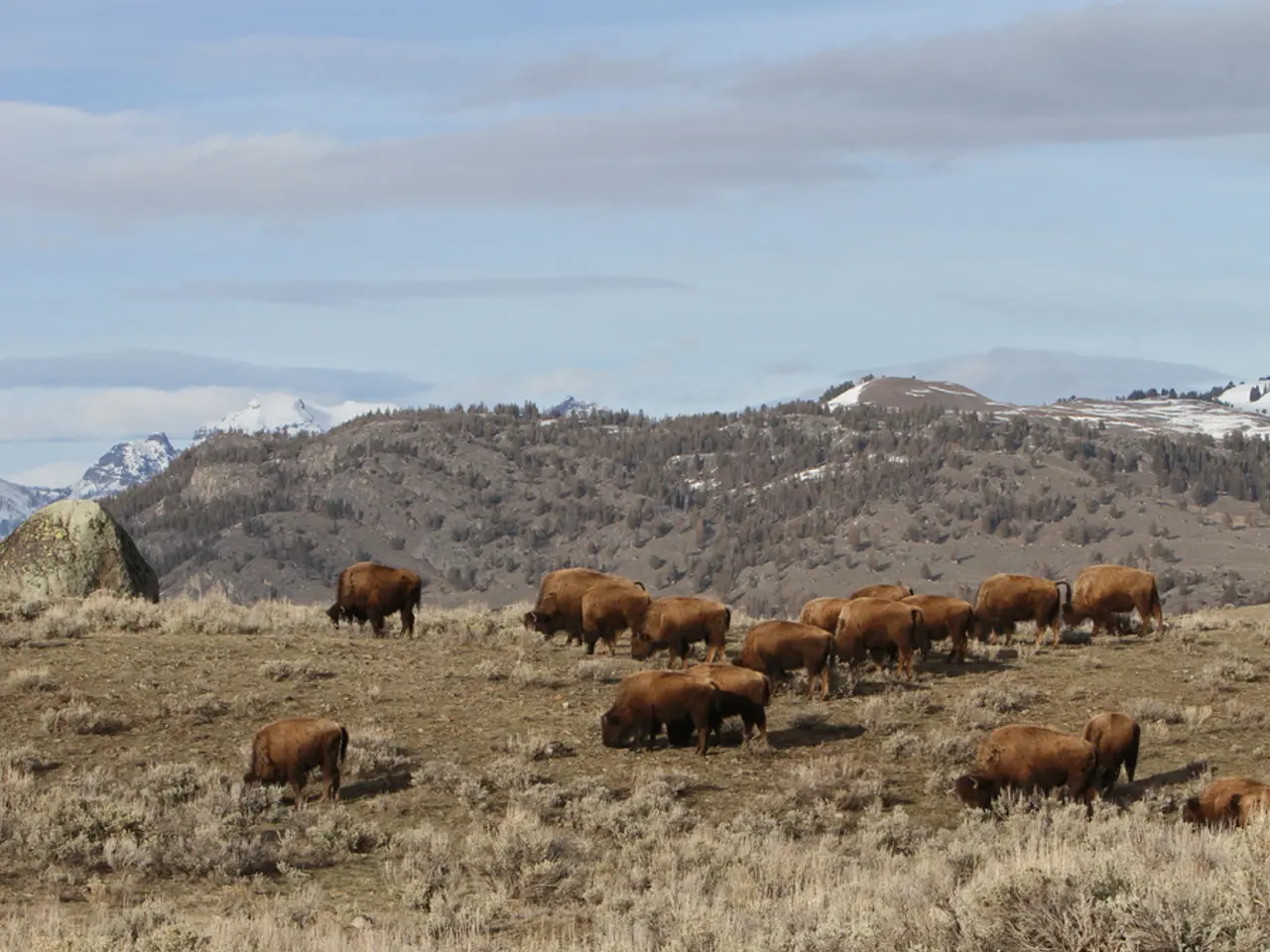Livestock replacement with wildlife encourages harmful pests to thrive
In the high-altitude landscape of the Spiti region in North India, a 14-year study has shed light on the intricate relationships between livestock, wildlife, and arthropods. Conducted in Kibber village, this research has significant implications for biodiversity, agriculture, and public health.
The study, led by researchers Sumanta Bagchi and Krishna Gopal Saxena, examined the impact of livestock on arthropods, such as spiders and ants. The findings revealed changes in the populations of these creatures due to the presence of livestock, which includes cattle, horses, donkeys, goats, and sheep.
Wildlife in the region is diverse, with species like bharal or blue sheep, wild yak, ibex, and wild ass coexisting with domestic animals. Saxena, a fellow at India's National Academy of Agricultural Sciences, suggests that disease cross-transmission between livestock and wild grazing mammals is a concern.
One of the key findings of the study is the abundance of leaf-eating grasshoppers and the depletion of spiders that prey on them in areas where livestock graze. This could be due to changes in vegetation, as suggested by Bagchi, which may affect the ability of spiders to catch their prey.
Ticks and mites were found to be more abundant in plots where livestock were grazing compared to areas left to wildlife. These parasites spread diseases among more than 80% of the world's cattle and present a threat to humans, according to the study.
Saxena emphasises the need for further investigations to discover the exact mechanisms that link livestock, wildlife, vegetation, pests, and predatory arthropods such as spiders. The impacts call for planned interventions aligned with the UN's One Health approach, which aims to balance the health of people, animals, and ecosystems and control zoonoses - diseases that spread between animals and humans.
The findings of this study highlight the need for monitoring and surveillance of vector-borne disease risks in ecosystems where there is a close interface between wild animals, domestic livestock, and humans. As the world continues to urbanise and agricultural practices evolve, understanding these complex relationships becomes increasingly important for the sustainable management of our planet's resources.
This article was originally published on SciDev.Net.
Read also:
- Peptide YY (PYY): Exploring its Role in Appetite Suppression, Intestinal Health, and Cognitive Links
- Toddler Health: Rotavirus Signs, Origins, and Potential Complications
- Digestive issues and heart discomfort: Root causes and associated health conditions
- House Infernos: Deadly Hazards Surpassing the Flames








